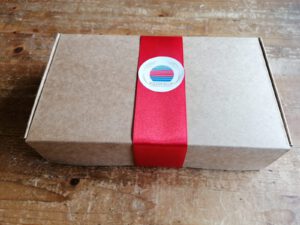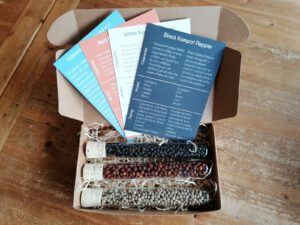Construction due to start in September 2024
The first references to pepper cultivation in Cambodia date back to the 13th century. Mention of it can be found in the records of the Chinese explorer Tcheou Ta Kouan.
Intensive pepper cultivation, which is also the tradition behind todays pepper cultivation in Kampot, can be traced back to the 1870s. The Sultan of Aceh ruled over one of the largest pepper productions in Indonesia. Threatened by Dutch conquerors, he burned down his pepper plantations and thus part of his wealth rather than leave them to the invaders. A large part of Southeast Asia’s pepper production was then relocated to the province of Kampot, which experienced a great boom thanks to the flourishing pepper trade in the years that followed.
In 1960, there were still around one million pepper plants in Kampot. The tradition of pepper cultivation was then almost lost when the Khmer Rouge seized power in 1975. The regime under the dictator Pol Pot wanted to turn Cambodia into a peasant state and, to feed the population, had to make the areas of the pepper plantations available for rice and vegetable cultivation. As a result, Kampot pepper disappeared completely from the world market and fell into oblivion.
The revival of pepper cultivation has been underway since the 1990s. In 2019, Cambodian pepper production amounted to 2,500 tons.
Peppercorns initially grow as fruit on a flowering vine, which can grow up to 10 meters high. The colour of the pepper depends on when the peppercorns are harvested and how they are processed. Cambodian pepper is generally available in black, white and red.
To produce black pepper, the dark green fruits are picked, immersed in boiling water for 10 minutes and then dried in the sun with the peppercorns raked throughout the day to ensure optimal drying. After 2 to 3 days, depending on the amount of light, the pepper is ready for packaging. Black pepper is spiciest in the range.
To produce white pepper, the ripe red peppercorns are picked, washed and immersed in boiling water for 10 minutes and then left to stand in a vat of clear water for one night. The skin surrounding the peppercorn is then removed. The peppercorns are then dried in the sun for 2 to 3 days, depending on the amount of light, and are then ready for packaging. Least spicy.
To produce red pepper, the ripe red peppercorns are picked, washed, immersed in boiling water for 10 minutes and then dried in the sun for 2 to 3 days, depending on the amount of light, before being packaged. Red pepper is less spicy than black pepper.
We now have Cambodian pepper is available in black, white and red.
You can enjoy the pepper of your choice whilst supporting our new school construction. Get your pepper while stocks last. We would be delighted if you would support our project through a donation of:
50 gram bags for € 7,50
100 gram bags for € 15,00
100 gram jars for € 16,00
We also have gift packs with 30 gram of each black, white and red pepper, for a donation of € 32,00.
Postage costs will be added depending on volume and weight.
All proceeds will go towards the construction of the new English school.
If you would like to support this iniative please email nanette.langfeldt@web.de or if you are in United Kingdom patrick@kidshelp-kambodscha.org.




